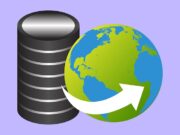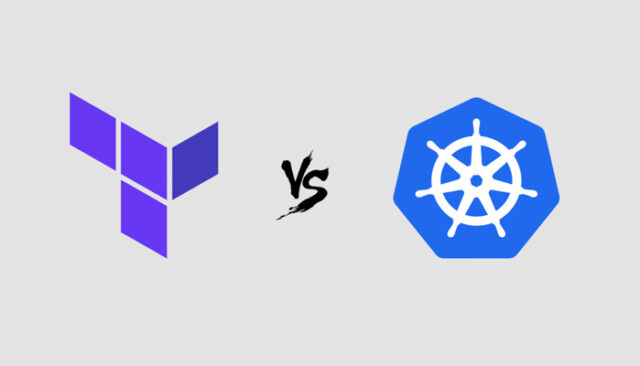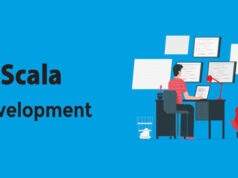In the world of DevOps, there are two popular open-source tools vying for dominance: Terraform and Kubernetes. In this blog post, we will compare and contrast these two tools so that you can decide which one is right for your needs. Both Terraform and Kubernetes are excellent choices for automating the provisioning and management of cloud infrastructure. However, they each have their own strengths and weaknesses from any perspective. Read on to learn more about these two DevOps tools so that you can make an informed decision about which one to use for your next project.
Table of contents
- Choosing Terraform vs. Kubernetes
- What Does Kubernetes Do Compare to Terraform?
- Kubernetes and Terraform Differences
- Kubernetes and Terraform Similarities
- Terraform vs. Kubernetes: FAQs
- Conclusion
Choosing Terraform vs. Kubernetes
There are a number of factors to consider when choosing between Terraform and Kubernetes. Here are some key considerations:
- Ease of use: Terraform is more user-friendly than Kubernetes, making it easier to get started with Infrastructure as Code.
- Language support: Terraform supports a wider range of languages than Kubernetes, making it easier to integrate into existing workflows.
- Scale: Terraform can manage infrastructure at scale more effectively than Kubernetes, making it a better choice for large-scale deployments.
- Support: There is more community and vendor support available for Terraform than Kubernetes, making it easier to find help when needed.
What Does Kubernetes Do Compare to Terraform?
Kubernetes is a container orchestration tool that can be used to manage both stateless and stateful applications. Terraform is a tool for provisioning and managing cloud infrastructure. Both tools can be used to manage infrastructure as code.
Kubernetes provides many benefits over Terraform, including:
-Easier integration with existing CI/CD pipelines
-Rolling updates and rollbacks
-Service discovery and load balancing
-Storage orchestration
-Self-healing capabilities
Terraform does have some advantages over Kubernetes, however:
-It is simpler to use for single provisioning instances or small groups of resources
-It offers more flexibility in terms of resource types that can be managed
-It integrates with a wider range of cloud providers.
For Candidates who want to advance their career, Kubernetes Online Training is the best option
Kubernetes and Terraform Differences
Kubernetes and Terraform are both powerful tools for managing infrastructure, but they have some key differences. Kubernetes is focused on container orchestration, while Terraform is more general-purpose and can manage any type of infrastructure.
Kubernetes is also much newer than Terraform, and as a result, it doesn’t have as many features or plugins. However, it is rapidly gaining popularity and is catching up to Terraform in terms of functionality.
Finally, Kubernetes is open source and free to use, while Terraform is proprietary software from HashiCorp. This may be a deciding factor for some organizations when choosing between the two tools.
1. Automation capabilities
When it comes to automation, both Terraform and Kubernetes offer a lot of capabilities. With Terraform, you can use its powerful scripting language to automate the provisioning and management of your infrastructure. Kubernetes also has a lot of automation features, including its own declarative configuration language, which can be used to automate the deployment and management of your containerized applications.
2. Lifecycle management
Lifecycle management is an important part of any cloud infrastructure. Terraform, and Kubernetes are two popular tools for managing cloud infrastructure. In this article, we’ll compare these two tools to help you decide which one is right for your needs.
Terraform is a tool for provisioning and managing cloud infrastructure. It supports many different providers, including AWS, Azure, Google Cloud Platform, and more. Terraform is easy to use and can be used to manage both simple and complex infrastructures.
Kubernetes is a tool for automating the deployment, scaling, and management of containerized applications here. It works with any container runtime and has excellent support for Docker containers. Kubernetes also provides extensive APIs that allow it to be integrated into many different DevOps toolchains.
Both Terraform and Kubernetes are excellent choices for the lifecycle management of cloud infrastructure. However, there are some key differences between these two tools that you should be aware of before choosing one or the other:
– Terraform is focused on provisioning infrastructure, while Kubernetes is focused on container orchestration. If you’re looking for a tool to provision your Infrastructure as Code (IaC), then Terraform is a good choice. If you’re looking for a tool to manage your containerized applications, then Kubernetes is a better choice.
– Terraform supports a wide variety of cloud providers, while Kubernetes is provider-agnostic. This means that Terraform can be used to provision infrastructure on any cloud platform, while Kubernetes can be used to manage containerized applications on any platform.
– Terraform has a declarative syntax that is easy to learn and use, while Kubernetes’ configuration is more complex. This means that Terraform is easier to get started with, but Kubernetes provides more flexibility and power.
In general, Terraform is a good choice for provisioning infrastructure, while Kubernetes is a better choice for managing containerized applications.
4. Multicloud deployment
Multicloud deployment is the process of deploying an application or service across multiple cloud platforms. Multicloud deployment can provide organizations with greater flexibility and choice when it comes to selecting the right mix of cloud providers and services for their needs.
When comparing Terraform and Kubernetes, both tools can be used for multicloud deployments. However, there are some key differences to consider.
Terraform is a tool designed for provisioning and managing infrastructure as code. It supports a wide variety of cloud providers and can be used to deploy applications and services on-premises, in the cloud, or across multiple clouds.
Kubernetes is a container orchestration platform that can be used to manage and deploy containerized applications and services. It supports multiple cloud providers and can be used to deploy applications and services on-premises, in the cloud, or across multiple clouds.
Kubernetes and Terraform Similarities
Kubernetes and Terraform are two popular DevOps tools that have many similarities. Both tools are used for automating the deployment and management of cloud-based resources.
Both Kubernetes and Terraform use declarative configuration files to define the desired state of the infrastructure. This allows for reproducible and reliable deployments.
Another similarity between Kubernetes and Terraform is that both tools support a wide range of cloud providers. This makes it easy to switch providers or deploy resources across multiple providers.
Finally, both Kubernetes and Terraform have a rich set of features that can be used to automate various tasks involved in managing cloud resources.
Terraform vs. Kubernetes: FAQs
1. What is Terraform?
Terraform is an open-source tool for provisioning and managing cloud infrastructure for you. It can be used to manage resources in a variety of cloud providers, including AWS, Google Cloud, Azure, and more. Terraform is typically used to manage resources such as virtual machines, storage accounts, and networking configurations.
2. What is Kubernetes?
Kubernetes is an open-source container orchestration platform that can be used to deploy and manage containerized applications at scale. Kubernetes can be used with a variety of container runtime environments, including Docker and Rocket. Kubernetes is often used to automate the deployment, scaling, and management of containerized applications in a cluster environment.
3. What is the difference between Terraform and Kubernetes?
Terraform is a tool for provisioning and managing infrastructure, while Kubernetes is a container orchestration platform. While both can be used for deploying applications, they have different strengths and weaknesses.
4. Which one should I use?
It depends on your needs. If you need more flexibility in how you manage your infrastructure, Terraform may be a better choice. However, if you need to manage large numbers of containers, Kubernetes may be a better option.
5. What are some of the benefits of using Terraform?
Some benefits of Terraform include its ability to:
– Provision resources quickly and easily
– Support multiple providers (e.g., AWS, Google Cloud, Azure)
– Be used as part of a continuous integration/delivery pipeline
– Scale infrastructure up or down automatically based on demand
– Declaratively specify infrastructure as code for ease of management and greater collaboration among team members
Some drawbacks of Terraform include its steep learning curve and lack of support for certain resource types (e.g., Lambda functions). Additionally, because it relies on third-party providers, there may be some provider-specific quirks that you need to work around.
Conclusion
Overall, both Terraform and Kubernetes are great DevOps tools that can help you automate the creation, management, and destruction of your infrastructure. However, there are some major crucial key differences between the two tools that you should be aware of before deciding which one to use. Terraform is better suited for those who want more control over their infrastructure and how it is created, while Kubernetes is better for those who need a more flexible and scalable solution.



































